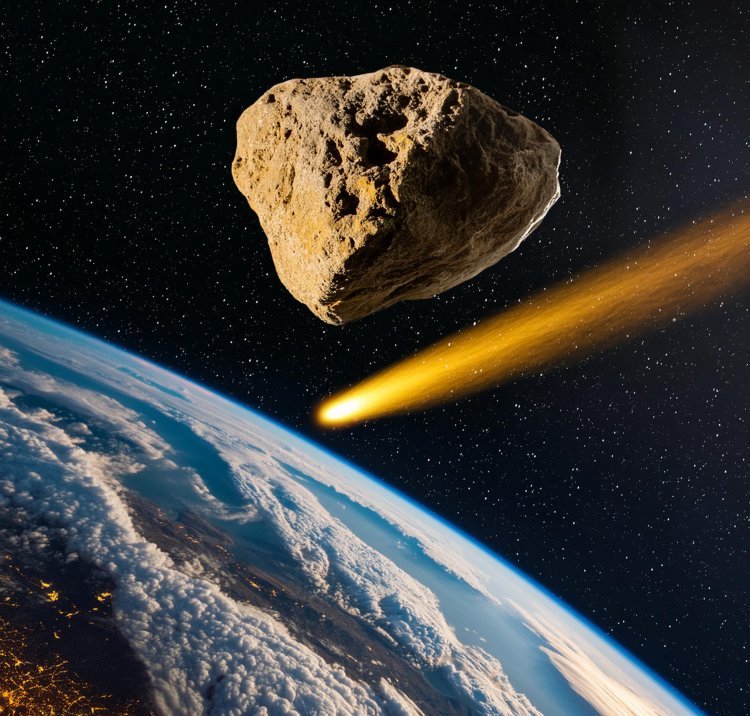NASA's Detection of Asteroid 2024 JY1: A Closer Look
NASA has detected asteroid 2024 JY1, measuring 160 feet in diameter and traveling at 37,070 kilometers per hour. Although the asteroid is massive, it is non-hazardous and will pass Earth at a safe distance of 4.16 million miles.

NASA has once again demonstrated its remarkable capability to monitor and track celestial objects with the recent detection of asteroid 2024 JY1. This space rock, estimated to be about 160 feet in diameter, is hurtling through space at an astonishing speed of 37,070 kilometers per hour. While its size and speed are indeed impressive, the asteroid poses no threat to our planet. Set to pass by Earth at a comfortable distance of approximately 4.16 million miles, or 17 times the distance between the Earth and the Moon, 2024 JY1 is a fascinating subject of study for astronomers and space enthusiasts alike.
What We Know About 2024 JY1
Size and Speed: The asteroid measures around 160 feet in diameter, making it comparable to the height of a 16-story building. Its rapid speed of 37,070 kilometers per hour underscores the dynamic nature of these celestial bodies and the importance of precise tracking systems.
Distance from Earth: One of the most reassuring aspects of 2024 JY1 is its trajectory. The asteroid will safely bypass our planet at a distance of about 4.16 million miles. To put this in perspective, this distance is 17 times the average distance from the Earth to the Moon, ensuring that there is no risk of impact.
The Role of NASA in Monitoring Near-Earth Objects (NEOs)
NASA's ongoing efforts to detect and monitor near-Earth objects (NEOs) are crucial for planetary defense. The detection of 2024 JY1 is a testament to the effectiveness of NASA's surveillance systems and the dedication of its scientists. These efforts are part of a broader mission to identify potentially hazardous asteroids and ensure the safety of our planet.
NASA's Planetary Defense Coordination Office (PDCO): Established to manage the detection of potentially hazardous NEOs, the PDCO works in collaboration with observatories and space agencies worldwide. The office aims to characterize and monitor these objects, assess their impact risks, and develop strategies to mitigate potential threats.
Advanced Tracking Technologies: NASA utilizes sophisticated technologies such as radar observations, telescopic imaging, and computer simulations to track and analyze asteroids. These tools enable scientists to determine an asteroid's size, shape, rotation, and trajectory with remarkable accuracy.
The Importance of Public Awareness and Education
Public awareness and education about asteroids and space science are essential components of NASA's mission. By keeping the public informed about celestial events and the measures in place to protect our planet, NASA fosters a greater understanding of space and encourages interest in STEM (Science, Technology, Engineering, and Mathematics) fields.
Outreach Programs: NASA conducts various outreach programs to engage the public, including educational workshops, public lectures, and interactive online resources. These initiatives aim to demystify space science and inspire the next generation of astronomers and scientists.
Media Coverage: Significant asteroid detections, like that of 2024 JY1, often receive extensive media coverage. This not only informs the public about current events in space but also highlights the importance of ongoing research and monitoring efforts.
Conclusion
The detection of asteroid 2024 JY1 is a reminder of the vast and dynamic nature of our solar system. While the asteroid is indeed massive and fast-moving, NASA's tracking and monitoring systems provide us with the assurance that it poses no threat to Earth. The asteroid's safe passage at a distance of 4.16 million miles is a testament to the effectiveness of NASA's efforts in ensuring planetary safety.
As we continue to explore and understand our cosmic neighborhood, the work of organizations like NASA remains invaluable. By detecting and studying objects like 2024 JY1, we not only safeguard our planet but also expand our knowledge of the universe. Public awareness and education play a crucial role in these efforts, fostering a greater appreciation for space science and its impact on our lives.
The next time you look up at the night sky, remember that there are countless celestial bodies like 2024 JY1 traveling through space. Thanks to NASA's dedication and advanced technologies, we can rest assured that we are well-protected and informed about these fascinating objects.
What's Your Reaction?




















